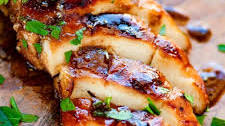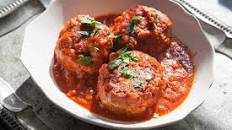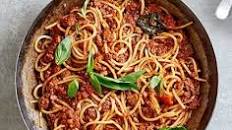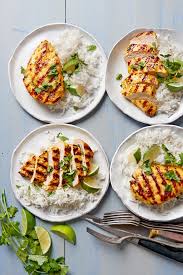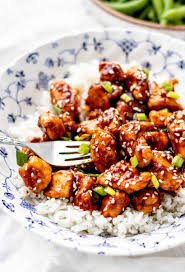Authentic Empanada Recipe: A Taste of Latin Flavour

The Perfect Empanada Recipe: A Taste of Latin Flavour
Empanadas are a beloved dish in Latin American cuisine, known for their delicious fillings and crispy pastry shells. Whether you prefer them baked or fried, empanadas are a versatile treat that can be enjoyed as a snack or a meal. Here, we share a classic empanada recipe that will transport your taste buds to the vibrant streets of Latin America.
Ingredients:
- 2 cups all-purpose flour
- 1/2 teaspoon salt
- 1/2 cup cold unsalted butter, cubed
- 1/4 – 1/2 cup cold water
- 1 tablespoon olive oil
- 1 small onion, finely chopped
- 2 cloves garlic, minced
- 1 red bell pepper, diced
- 250g ground beef or chicken
- 1 teaspoon cumin
- Salt and pepper to taste
- 1/4 cup pitted green olives, sliced
- 2 hard-boiled eggs, chopped
Instructions:
- Prepare the Dough:
- Make the Filling:
- Assemble the Empanadas:
- Cooking Options:
- Serve & Enjoy:
– In a large bowl, combine the flour and salt.
– Add the cubed butter and rub it into the flour mixture until it resembles breadcrumbs.
– Slowly add the cold water and mix until the dough comes together.
– Shape the dough into a ball, wrap it in cling film, and refrigerate for 30 minutes.
– In a pan, heat olive oil over medium heat.
– Add the onion and garlic, sauté until softened.
– Stir in the bell pepper and cook for another 3-4 minutes.
– Add the ground beef or chicken, cumin, salt, and pepper. Cook until browned.
– Remove from heat and stir in olives and chopped eggs.
– Preheat oven to 200°C (180°C fan).
– Roll out the dough on a floured surface to about 0.5cm thickness.
– Using a round cutter or a small plate as a guide, cut out circles from the dough.
– Spoon some filling onto each circle.
– Fold over to create half-moon shapes and seal by pressing edges with a fork.
– To bake: Place empanadas on a baking tray lined with parchment paper. Brush with egg wash. Bake for 20-25 minutes until golden brown.
– To fry: Heat oil in a deep pan. Fry empanadas until crispy and golden on both sides.
– Serve hot with your favourite dipping sauce or salsa.
– Enjoy these homemade empanadas as a delightful snack or meal that captures the essence of Latin American cuisine.
Gather your friends and family to savour these homemade empanadas filled with flavourful ingredients that will surely satisfy your cravings for authentic Latin cuisine.
Empanada Recipe FAQs: Dough Types, Cooking Methods, Common Mistakes, and Pastry Tips
- What dough are empanadas made of?
- Is it better to fry or bake empanadas?
- What are common empanada mistakes?
- What pastry is best for empanadas?
- Is empanada dough the same as pizza dough?
What dough are empanadas made of?
Empanadas are typically made with a simple dough consisting of all-purpose flour, salt, cold butter, and water. This dough is easy to work with and can be shaped into the perfect pastry shell for enclosing the delicious fillings that make empanadas so irresistible. The combination of these basic ingredients results in a crispy yet tender crust that complements the savoury or sweet fillings inside. Whether baked or fried, the dough used for empanadas plays a crucial role in creating a delightful culinary experience that captures the essence of this popular Latin American dish.
Is it better to fry or bake empanadas?
When it comes to preparing empanadas, the choice between frying and baking often depends on personal preference and dietary considerations. Frying empanadas typically results in a crispy, golden exterior that many find irresistible, while baking offers a healthier alternative with a slightly lighter texture. Frying may enhance the overall richness of the dish, while baking can be a convenient and less messy option. Ultimately, whether you fry or bake your empanadas, both methods can yield delicious results that cater to different tastes and dietary needs.
What are common empanada mistakes?
When preparing empanadas, there are common mistakes that can affect the final outcome of this beloved Latin American dish. One frequent error is overfilling the empanadas, which can lead to leaks during baking or frying. Another common mistake is not properly sealing the edges of the empanadas, resulting in filling spilling out during cooking. Additionally, using a dough that is too thick or too thin can impact the texture and overall taste of the empanadas. It’s essential to follow the recipe closely and pay attention to details such as dough consistency and filling distribution to ensure a successful batch of delicious empanadas.
What pastry is best for empanadas?
When it comes to choosing the best pastry for empanadas, many enthusiasts swear by a simple dough made with all-purpose flour, butter, and water. This classic pastry recipe yields a crisp and flaky shell that perfectly complements the savoury fillings of traditional empanadas. The key is to achieve a balance between a sturdy crust that holds the filling together and a light texture that melts in your mouth with each bite. Experimenting with different types of dough, such as those incorporating lard or even puff pastry, can also add unique textures and flavours to your empanadas, catering to personal preferences and culinary creativity. Ultimately, the best pastry for empanadas is one that enhances the overall taste experience while staying true to the dish’s cultural roots.
Is empanada dough the same as pizza dough?
When it comes to empanadas and pizza, the dough used for each dish differs in texture and composition. Empanada dough is typically more flaky and sturdy, designed to hold the filling securely without becoming soggy. On the other hand, pizza dough is softer and more elastic, ideal for stretching into a thin crust that bakes to perfection in a hot oven. While both doughs share basic ingredients like flour and water, their ratios and preparation methods vary significantly to suit the specific requirements of each culinary delight.

